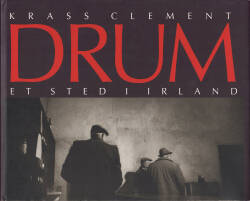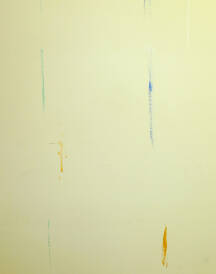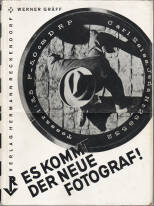Kosmos (signed - last copy)
by Joji Morita
Photographs: Joji Morita
Publisher: Sokyu-sha
56 pages
Pictures: 49 black and white images
Year: 2014
Comments: edition of 550, softcover with slipcase. slightly bent on the backside of the slipcase.
It is said that Pythagoras was the first philosopher in ancient Greece to use the term “Kosmos” in reference to the universe. The word “kosmos” in ancient Greek refers to a congruent balance or order. A state of harmony present in a garden, in societal law or the human spirit may be described as “Kata Kosmon,” that is, “in accord with the cosmos.”
Looking down below from higher ground, you perceive the city as a physical cluster, a sense you cannot get while walking within it. The roads have a sensation of speed, like blood vessels circulating vital energy to conduct that power to the farthest ends, while jumbled layers of elevated roads and pedestrian overpasses are reminiscent of the intertwined bundles of muscular fiber. Portions of ground excavated for construction are as open wounds, not meant to be seen.
And in each of these parts are the subtle movements of small human beings, like red blood cells. Contrasted, the uniform buildings aligned in regular rows appear like beautiful inorganic crystals. In the details here too, are signs and traces of human activity, everywhere. Each of these activities together mount to a limitless multitude, forming a harmonious eddy, or a beautiful crystallization, growing into yet another, different, cluster
more books tagged »Japanese« | >> see all
-
The Narcissistic City Notebook
by Takashi Homma
Euro 17 -
Paris 88/89 (last copy)
by Daido Moriyama
sold out -
Issan (signed)
by Eriko Koga
Euro 50 -
Infinity
by Miyako Ishiuchi
sold out -
Foto-Forum (signed by Max Pinckers)
by Max Pinckers and Daisuke Yokota
Euro 42 -
The Last Cosmology
by Kikuji Kawada
sold out
more books tagged »black and white« | >> see all
-
Big Zep
by various photographers
Euro 31.90 19.14 -
All about Golf (photobook dummy)
by Regina Anzenberger
Euro 63.80 38.28 -
Anderswo (signed)
by Erich Lessing
Euro 165 -
Portraits (signed)
by Bruce Davidson
sold out -
The Soviet Photobook 1920-1941
by Mikhail Karasik
sold out -
sweet nothings
by Vanessa Winship
sold out
Random selection from the Virtual bookshelf josefchladek.com
Kosmos (signed - last copy)
by Joji Morita
Photographs: Joji Morita
Publisher: Sokyu-sha
56 pages
Pictures: 49 black and white images
Year: 2014
Comments: edition of 550, softcover with slipcase. slightly bent on the backside of the slipcase.
It is said that Pythagoras was the first philosopher in ancient Greece to use the term “Kosmos” in reference to the universe. The word “kosmos” in ancient Greek refers to a congruent balance or order. A state of harmony present in a garden, in societal law or the human spirit may be described as “Kata Kosmon,” that is, “in accord with the cosmos.”
Looking down below from higher ground, you perceive the city as a physical cluster, a sense you cannot get while walking within it. The roads have a sensation of speed, like blood vessels circulating vital energy to conduct that power to the farthest ends, while jumbled layers of elevated roads and pedestrian overpasses are reminiscent of the intertwined bundles of muscular fiber. Portions of ground excavated for construction are as open wounds, not meant to be seen.
And in each of these parts are the subtle movements of small human beings, like red blood cells. Contrasted, the uniform buildings aligned in regular rows appear like beautiful inorganic crystals. In the details here too, are signs and traces of human activity, everywhere. Each of these activities together mount to a limitless multitude, forming a harmonious eddy, or a beautiful crystallization, growing into yet another, different, cluster
more books tagged »Japanese« | >> see all
-
The Narcissistic City Notebook
by Takashi Homma
Euro 17 -
Paris 88/89 (last copy)
by Daido Moriyama
sold out -
Issan (signed)
by Eriko Koga
Euro 50 -
Infinity
by Miyako Ishiuchi
sold out -
Foto-Forum (signed by Max Pinckers)
by Max Pinckers and Daisuke Yokota
Euro 42 -
The Last Cosmology
by Kikuji Kawada
sold out
more books tagged »black and white« | >> see all
-
Big Zep
by various photographers
Euro 31.90 19.14 -
All about Golf (photobook dummy)
by Regina Anzenberger
Euro 63.80 38.28 -
Anderswo (signed)
by Erich Lessing
Euro 165 -
Portraits (signed)
by Bruce Davidson
sold out -
The Soviet Photobook 1920-1941
by Mikhail Karasik
sold out -
sweet nothings
by Vanessa Winship
sold out
Random selection from the Virtual bookshelf josefchladek.com
Kosmos (signed - last copy)
by Joji Morita
Photographs: Joji Morita
Publisher: Sokyu-sha
56 pages
Pictures: 49 black and white images
Year: 2014
Comments: edition of 550, softcover with slipcase. slightly bent on the backside of the slipcase.
It is said that Pythagoras was the first philosopher in ancient Greece to use the term “Kosmos” in reference to the universe. The word “kosmos” in ancient Greek refers to a congruent balance or order. A state of harmony present in a garden, in societal law or the human spirit may be described as “Kata Kosmon,” that is, “in accord with the cosmos.”
Looking down below from higher ground, you perceive the city as a physical cluster, a sense you cannot get while walking within it. The roads have a sensation of speed, like blood vessels circulating vital energy to conduct that power to the farthest ends, while jumbled layers of elevated roads and pedestrian overpasses are reminiscent of the intertwined bundles of muscular fiber. Portions of ground excavated for construction are as open wounds, not meant to be seen.
And in each of these parts are the subtle movements of small human beings, like red blood cells. Contrasted, the uniform buildings aligned in regular rows appear like beautiful inorganic crystals. In the details here too, are signs and traces of human activity, everywhere. Each of these activities together mount to a limitless multitude, forming a harmonious eddy, or a beautiful crystallization, growing into yet another, different, cluster
more books tagged »Japanese« | >> see all
-
The Narcissistic City Notebook
by Takashi Homma
Euro 17 -
Paris 88/89 (last copy)
by Daido Moriyama
sold out -
Issan (signed)
by Eriko Koga
Euro 50 -
Infinity
by Miyako Ishiuchi
sold out -
Foto-Forum (signed by Max Pinckers)
by Max Pinckers and Daisuke Yokota
Euro 42 -
The Last Cosmology
by Kikuji Kawada
sold out
more books tagged »black and white« | >> see all
-
Big Zep
by various photographers
Euro 31.90 19.14 -
All about Golf (photobook dummy)
by Regina Anzenberger
Euro 63.80 38.28 -
Anderswo (signed)
by Erich Lessing
Euro 165 -
Portraits (signed)
by Bruce Davidson
sold out -
The Soviet Photobook 1920-1941
by Mikhail Karasik
sold out -
sweet nothings
by Vanessa Winship
sold out
Random selection from the Virtual bookshelf josefchladek.com


















;jpg?c=8c505814bb215507267c04b84d48d520)




;jpg?c=d0e7a3fbcae41255a13f6c9ec405b80c)

;jpg?c=a8b4058f71c86b1b489d9c6b418c3d8d)


;jpg?c=7c950876a3a3668296040dcdc875d10e)
_;jpg?c=47c32f065ea475b761c69ad564129cd5)
